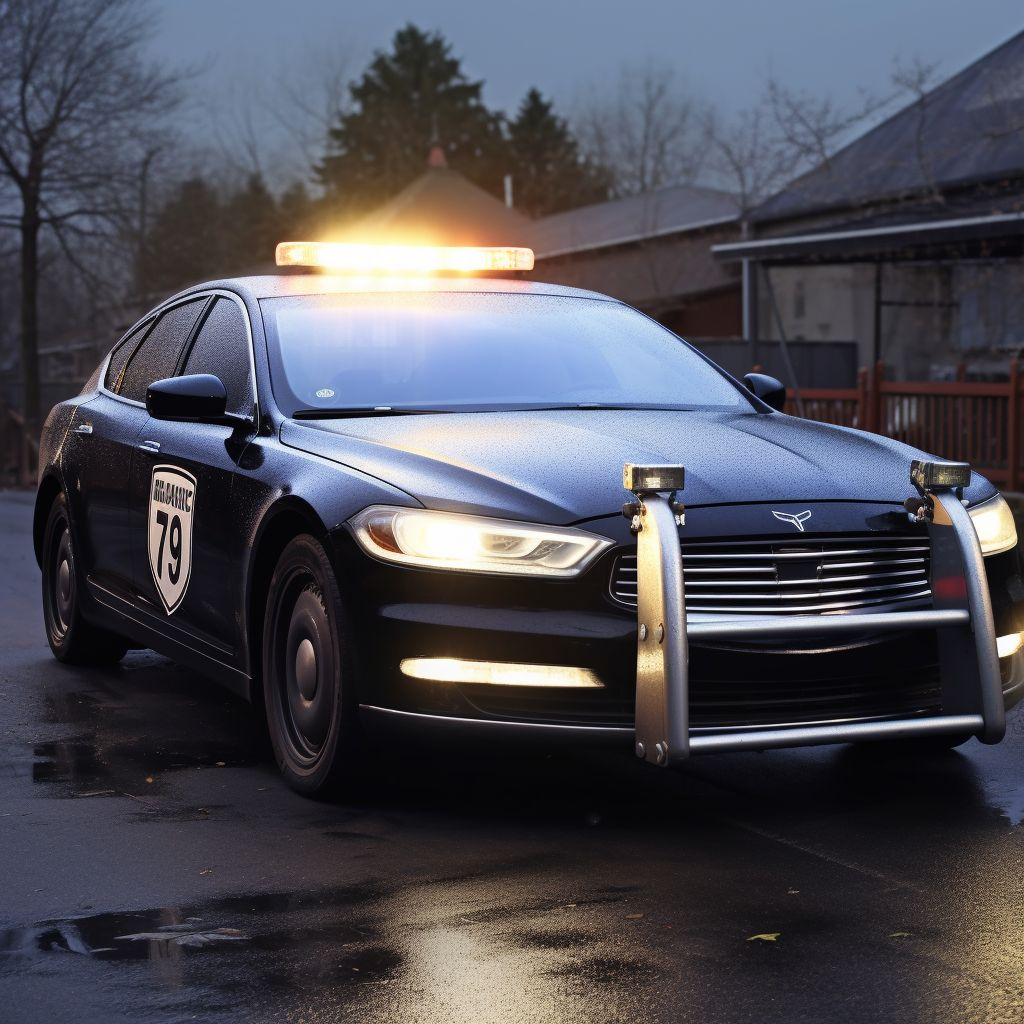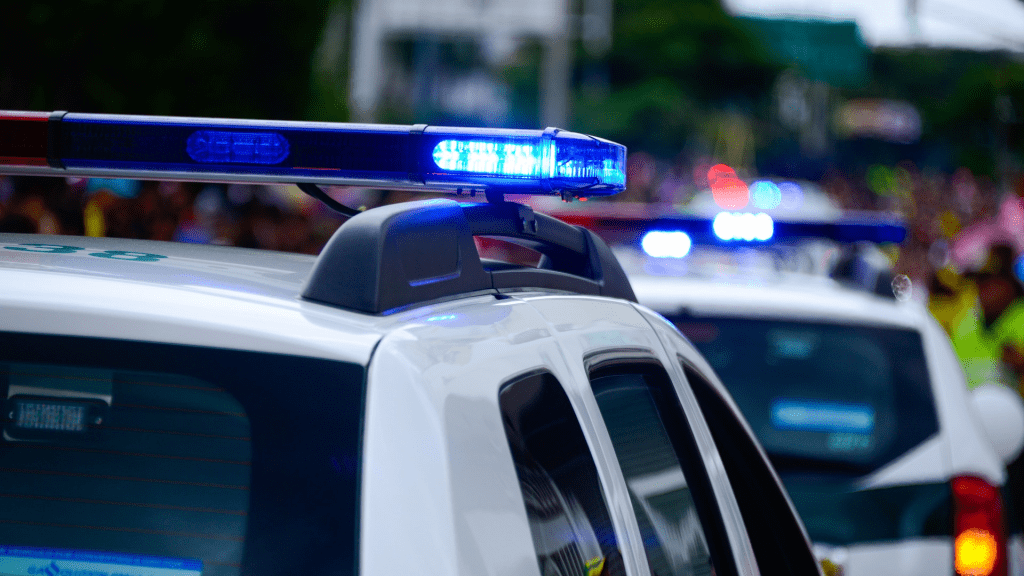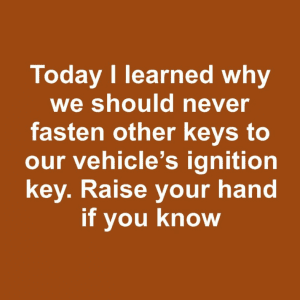We’ve all seen it happen: you’re pulled over by a police officer, and as they approach your vehicle, they briefly touch your car’s tail lights before speaking to you. At first glance, this action seems like an odd and random habit, but it turns out there’s much more to it. This seemingly small gesture serves a variety of purposes, some practical and some deeply rooted in law enforcement traditions. Let’s dive into the fascinating reasons why officers touch the car’s tail lights during traffic stops.
Documenting the Traffic Stop

One of the most significant reasons police officers touch the car’s tail lights is to leave behind a physical record of their presence. By doing this, they leave their fingerprints on the vehicle, which can be critical in certain situations. If a stop turns into a dispute or escalates into a more serious event, the fingerprints left on the car serve as evidence that the officer was at the scene.
This documentation can help verify the officer’s actions during the stop, especially in cases where there’s disagreement about what transpired. Whether for accountability purposes or in the event of a future investigation, this tiny act can carry substantial weight in ensuring the accuracy of the officer’s report.
Enhancing Officer Safety
Traffic stops are one of the riskiest parts of an officer’s job. When approaching a stopped vehicle, officers have limited visibility and don’t know what to expect. The driver or passengers could be calm and cooperative, but there’s always the potential for a situation to turn dangerous.
By touching the tail lights, officers create an opportunity to leave evidence that they were at the scene. Should the stop become more volatile—whether due to fleeing suspects or an unexpected threat—those fingerprints become crucial in tracking down the vehicle involved in the incident. This safety measure is a proactive way for officers to ensure that, even in a worst-case scenario, they leave behind a clue that could aid in identifying the car and its occupants.
Deterrence: A Subtle Reminder
Touching the tail lights also acts as a subtle deterrent to potential criminal behavior. When the driver sees the officer making physical contact with their vehicle, it sends a clear message: “I’m here, I’m paying attention, and I’m documenting this stop.” For individuals who might be considering concealing evidence or engaging in suspicious behavior, this action can make them think twice.
This small gesture can serve as a psychological cue, making drivers more aware that the officer is observing their actions closely. In turn, this can prevent the driver from making hasty decisions to hide contraband or tamper with evidence, helping to ensure a safer and smoother interaction.
Establishing a Routine: Consistency and Focus

Police officers rely heavily on routines during their daily duties to maintain focus and minimize errors. Conducting a traffic stop is a high-pressure situation, and even experienced officers use standard procedures to help them stay sharp. Touching the tail lights is one such routine, a familiar action that reinforces their awareness and alertness.
By following a consistent set of actions, officers reduce the chances of overlooking critical details. This muscle memory not only keeps the officer grounded during the stop but also helps ensure they’re mentally prepared to handle the situation effectively.
A Display of Authority
In the world of law enforcement, maintaining authority and control is crucial. When an officer approaches a vehicle and touches the tail lights, it serves as a subtle reminder to the driver that they’re in a situation that requires their full cooperation. The gesture asserts the officer’s presence and their authority, reinforcing the fact that they’re there to uphold the law.
This display of authority can help the officer establish control over the situation and ensure the driver complies with their instructions. In tense or uncertain situations, this act may help diffuse potential resistance by reminding the driver that the officer is trained, prepared, and paying attention.
Cultural Tradition Within Law Enforcement

Interestingly, touching the tail lights has also become something of a cultural tradition in some police departments. In these cases, it may not always be about safety or deterrence, but rather a symbolic act that marks the start of the interaction.
In certain regions, this gesture can be viewed as a sign of respect between the officer and the motorist. It signifies that the officer is acknowledging the driver, beginning the conversation in a way that sets the tone for a professional and respectful exchange. While this tradition isn’t universal, it’s a practice that’s been passed down through generations of law enforcement officers in various departments.
Why This Gesture Still Matters Today
You might be wondering, in an age of dashboard cameras and body cams, why does the physical act of touching a car’s tail lights still matter? While technology has indeed transformed policing, the simple act of making physical contact with the vehicle continues to offer benefits that cameras alone can’t provide.
Fingerprint evidence, the psychological impact on the driver, and the focus it brings to officers are all reasons why this routine remains relevant. It’s a gesture that ties modern policing to its historical roots while continuing to serve practical purposes today.
Conclusion: More Than Just a Habit
The practice of police officers touching the tail lights during traffic stops may seem like a quirky or outdated routine, but it holds multiple layers of importance. From documenting the stop and enhancing officer safety to deterring potential wrongdoing and establishing authority, this small act carries significant weight in the field of law enforcement. Whether rooted in tradition or used for practical purposes, understanding this gesture can help bridge the gap between law enforcement and the public, creating more respectful and informed interactions during traffic stops.


